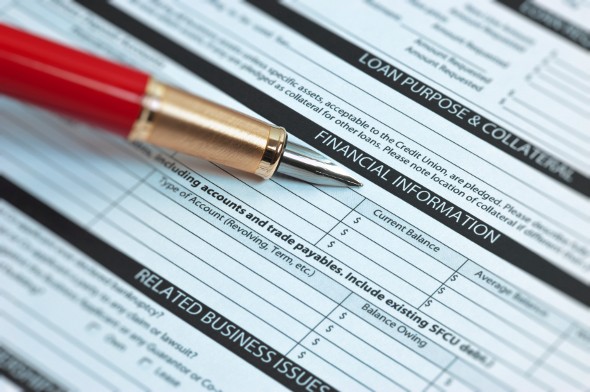If you default on a mortgage, the bank could repossess your home to recover part of their money. When it comes to personal loans, however, the only thing securing it in many cases is your own reputation (unless you plan to get a secured loan). Before you go out and apply for one, you might want to look at the pros and the cons of getting an unsecured personal loan.
Do you have questions about managing your money according to a financial plan? Speak with a financial advisor today.
What Is an Unsecured Personal Loan?
A personal loan is a way for you to get money for things you might need, such as to pay off medical debt, make improvements to your home or any other number of things. the unsecured part of an unsecured personal loan means that to get the loan, you don’t need to put down any sort of collateral. On the other hand, something like a mortgage has the home you’re purchasing as collateral.
Because an unsecured personal loan has no collateral backing it, you may encounter higher interest rates, fees and other things they could limit how far is the loan could go. In addition, the lack of collateral could make it hard for those with lower credit scores to get approval.
The Pros of Unsecured Personal Loans
No Risk to Personal Property
There are personal loans that are secured and there are those that aren’t. When a personal loan is secured, it’s backed by collateral that your lender can take if you can’t pay off your loan.
The good thing about having an unsecured personal loan is that your personal property usually isn’t at risk in the event of a default. So you won’t have to worry about losing your home or any of your other assets if you get laid off and making on-time payments becomes difficult or impossible.
The Application Process Is Simpler

Because there are other lenders besides banks and credit unions that offer personal loans, the process of getting one isn’t as complicated as it once was. You can apply for a loan from a peer-to-peer lending site from the comfort of your own home. And it’s possible to get approved for one in less than 24 hours.
Whether you qualify for a loan depends on your credit history and credit score. Besides that, you’ll need to be able to provide proof that you have a stable and secure source of income.
The Cons of Unsecured Personal Loans
If You Default, Your Lender Could Come After You
Even if a personal loan isn’t backed by a particular piece of personal property, a lender may still be able to place a lien on your assets in order to secure repayment. In order for a lender to obtain a lien, he must sue you in court. In addition to paying for the original loan amount you borrowed and late fees, you could be forced to pay for attorney fees and court costs.
After it’s all said and done, you could end up with a stain on your credit report and your wages could be garnished in the event of a successful lawsuit.
Loan Amounts May Be Smaller

It’s no secret that lenders make money by charging interest on loans, but there’s no profit if the loan is not repaid. That’s why lenders go to great lengths to limit the risk of borrower default. They check credit reports, verify employment and in the case of unsecured personal loans, they might limit the amount of money they lend you (especially if your credit score is low).
Rates and Payments Are Higher
Since unsecured personal loans are riskier than loans secured by property, lenders tend to charge higher interest rates. How much higher the rates are depends on your credit score and the amount of money you’re borrowing. As of May 2021 interest rates on unsecured personal loans ranged from 3% to 36%. It’s important to note that lenders may hide a portion of the higher interest rates in upfront fees such as loan origination and application fees.
With a higher interest rate, your monthly payments could be higher than they would be for a secured loan. And the longer your repayment period, the more you’ll pay in interest.
Before you sign off on a loan, make sure the monthly payment is within your budget. Personal loan agreements sometimes include substantial late payment penalties that can further upset your ability to make regular payments.
Finally, consider using SmartAsset’s personal loan calculator to find out what the total cost of borrowing really is. You may be unpleasantly surprised at how much you’re actually on the hook for. It could be that you’re simply exchanging a current problem for a future one that will be much more onerous.
Bottom Line
Of course, unsecured personal loans have their advantages. You can obtain a loan online without going through a strict underwriting process. You can then use the loan to cover a variety of expenses like unpaid medical debt or home improvement. But unsecured personal loans can be risky as well and you might have to settle for a higher interest rate. Avoid only thinking about what you can gain from getting a personal loan. Instead, consider what you might stand to lose.
Financial Planning Tips
- Building a financial plan can help you manage your finances over the long term. A financial advisor can offer you professional help with this. Finding a qualified financial advisor doesn’t have to be hard. SmartAsset’s free tool matches you with up to three financial advisors who serve your area, and you can interview your advisor matches at no cost to decide which one is right for you. If you’re ready to find an advisor who can help you achieve your financial goals, get started now.
- While financial plans allow you to plan over the years to come, a budget takes a more micro approach. Try using SmartAsset’s budget calculator to get started. You can also check out our listing of some of the top budgeting apps available on the market.
Photo credit: ©iStock.com/efenzi, ©iStock.com/teekid, ©iStock.com/123ducu
